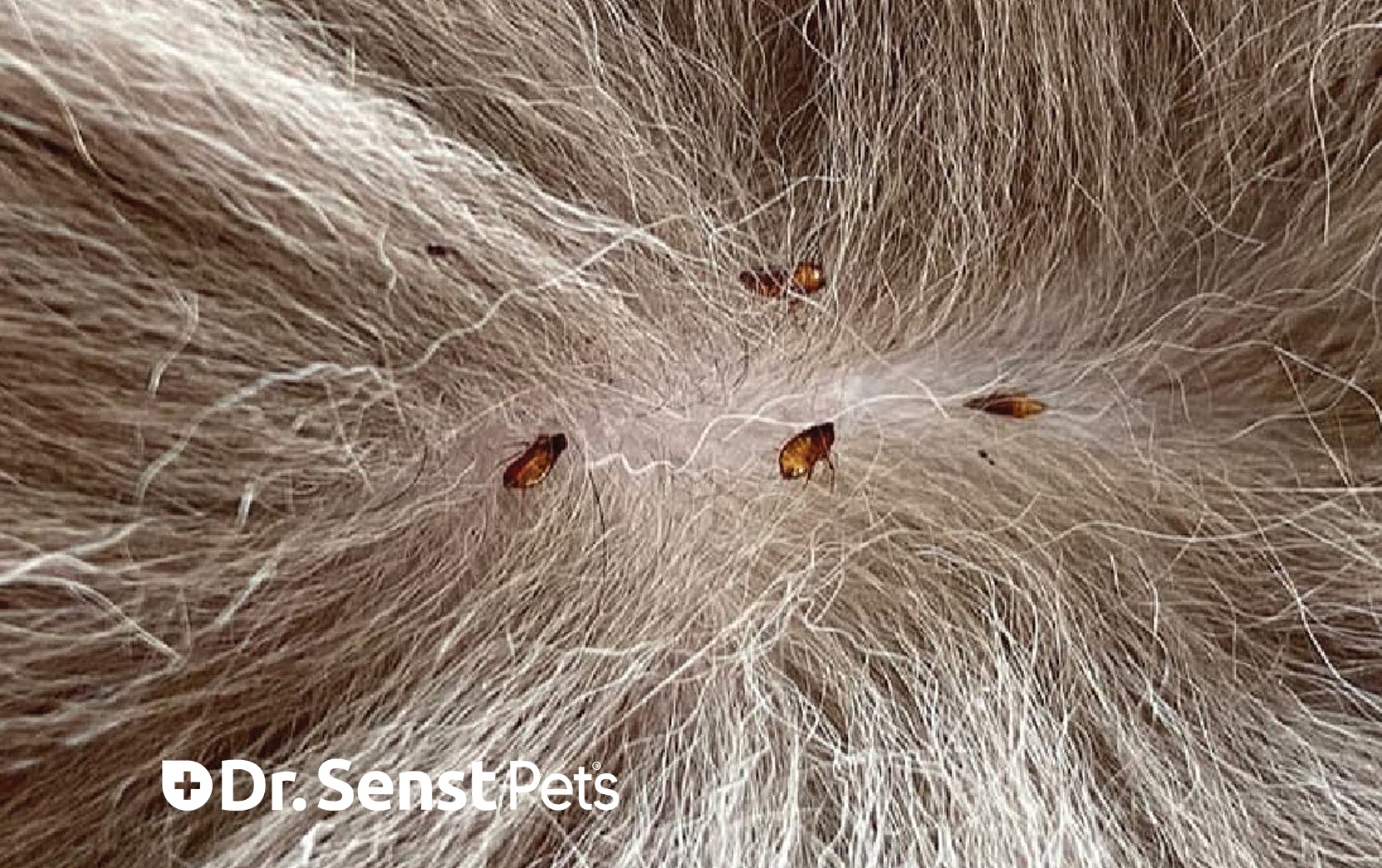
- by Dr.Thilo Senst
Understanding Cat Flea Bite Allergies: Symptoms & Treatments
- by Dr.Thilo Senst
Fleas are more than just a nuisance—they can cause significant discomfort and health issues for cats. One of the most common problems caused by fleas is cat flea bite allergies. This allergic reaction, also known as flea allergy dermatitis (FAD), occurs when a cat's immune system reacts to proteins in flea saliva. It leads to intense itching, skin inflammation, and secondary infections if left untreated.
In this article, we will discuss the symptoms, causes, and treatments for cat flea bite allergies. We'll also explore effective prevention strategies to keep your feline friend itch-free and happy.
When a flea bites, it injects saliva containing proteins that can trigger an allergic reaction in sensitive cats. This hypersensitivity leads to exaggerated itching, redness, and skin irritation, even from a single flea bite.
According to PDSA (People's Dispensary for Sick Animals), over 30% of cats in the UK treated for skin conditions show symptoms consistent with flea allergy dermatitis.
Cats with flea bite allergies often scratch persistently, particularly around their head, neck, and tail base.
Frequent scratching or licking can result in noticeable bald patches, especially near the tail.
You may notice red spots or raised bumps, which are signs of skin irritation.
Open sores can develop from constant scratching, leaving the cat vulnerable to secondary infections.
Cats suffering from flea bite allergies may become more irritable or withdrawn due to their discomfort.
Even a minor flea infestation can lead to severe allergic reactions in cats with hypersensitivity.
Warm and humid environments encourage flea breeding. With the UK experiencing milder winters in recent years, fleas are becoming a year-round problem.
Some cats with flea allergies may also be predisposed to other skin allergies, compounding their symptoms.
A vet may examine your cat for signs of flea dirt or visible fleas.
Allergy testing can confirm the presence of flea saliva antibodies in your cat's system.
Conditions like ringworm, food allergies, or bacterial infections can mimic flea allergy symptoms. Proper diagnosis is crucial.
The first step in managing flea bite allergies is eliminating fleas from your cat and its environment. Consider using:
Products like Dr. Senst Antiseptic Itchy Cats Spray can soothe irritated skin and reduce itching.
In severe cases, your vet may prescribe antihistamines or corticosteroids to reduce inflammation and itching.
If the skin is broken, antiseptic sprays like Dr. Senst Antiseptic Cat Wound Relief Spray can prevent bacterial infections.
Brushing your cat’s fur regularly can help spot fleas early. Use a flea comb to remove fleas and eggs.
Fleas can survive in carpets and upholstery. Steam-cleaning and vacuuming regularly can significantly reduce flea populations.
Invest in flea prevention products, even during colder months when flea activity typically decreases.
| Stage | Description | Risk |
|---|---|---|
| Eggs | Laid in fur or environment | Hatch in 2–14 days |
| Larvae | Feed on organic matter | Thrive in carpets and bedding |
| Pupae | Develop in a cocoon | Can remain dormant for months |
| Adult Fleas | Bite and reproduce on host | Lay up to 50 eggs per day |
Oatmeal has natural anti-inflammatory properties. Gently bathe your cat to soothe irritated skin.
Applying coconut oil to affected areas can reduce itching and promote healing.
Diluted apple cider vinegar can act as a natural flea repellent. However, avoid using it on open wounds.
Think of cat flea bite allergies as similar to a person allergic to mosquito bites. While most people experience minor itching, someone allergic to mosquito saliva may have severe swelling and discomfort. Similarly, even a single flea bite can trigger a severe reaction in allergic cats.
Persistent itching, redness, and bald patches near the tail base are common signs of flea allergy dermatitis.
Yes, fleas can be brought indoors on clothing or other pets, leading to infestations and allergies in indoor cats.
Year-round flea prevention, regular grooming, and maintaining a clean environment are the best strategies.
Understanding and addressing cat flea bite allergies is essential for maintaining your cat’s health and happiness. From prevention to treatment, a proactive approach ensures your feline friend remains itch-free and comfortable.
![]()
Enter your details & download our comprehensive 50+ page printable Dr. Senst Pet Care Planner completley FREE! - keep track of all your pet’s needs, from medical history and training to vet visits, grooming, diet, and more!










Share:
How to Recognise Tooth Pain in Dogs: Key Signs & Solutions
How to Clean Cat Wounds at Home: Easy Step-by-Step Guide